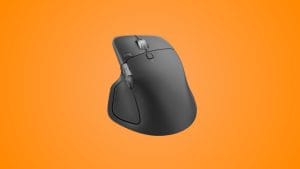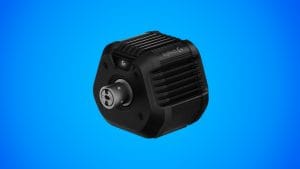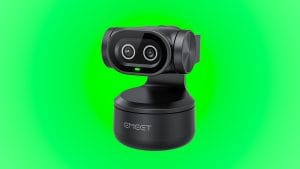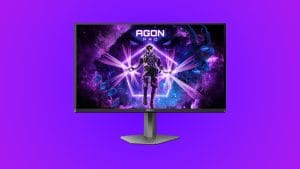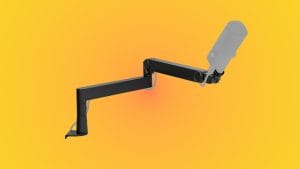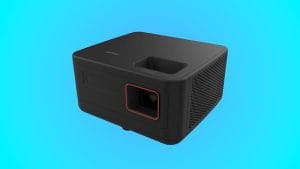Linkind EP6 Smart Hexagon RGB Light Panels
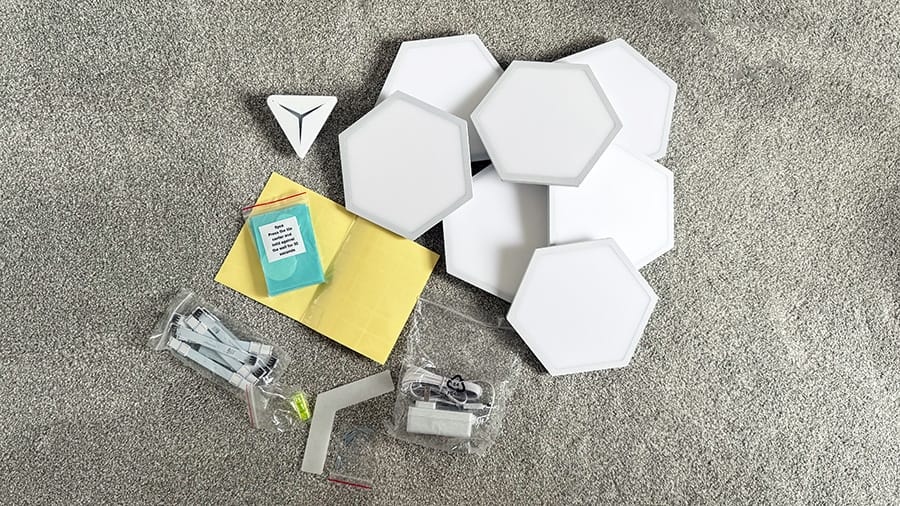
design
There’s been a set of Nanoleaf Shapes Hexagons in my streaming setup for years, so there was a certain sense of déjà vu when first inspecting the Linkind EP6 Hexagon Smart Panels. It’s all very similar, but quite different at the same time. In the box you’ll find seven light panels, a controller, a power brick, and a few mounting accessories. A single controller will support up to 21 panels, which is what I’ve been playing with here—though Linkind doesn’t offer larger, discounted bundles currently. The starter pack will set you back $139.99 at full price, nearly $10 less than Nanoleaf’s similar lights, though they’ve appeared on sale below $100 a couple of times already, so there’s likely a deal to be had.
Corner to corner, each Linkind EP6 hexagonal panel is just over seven inches wide and sits ¾ of an inch off the wall with molded plastic feet. There’s quite a large bezel around the edge of each panel—just under a centimetre or so—and while it blends into the frosted white face when the lights are off, the lines become strikingly noticeable when the panels light up. Whether this is a good or bad thing will come down to personal preference. They don’t look bad at all, and some people will be able to embrace them as part of the design—they just prevent the EP6 panels from becoming a seamless wall of light like the Nanoleaf panels do.
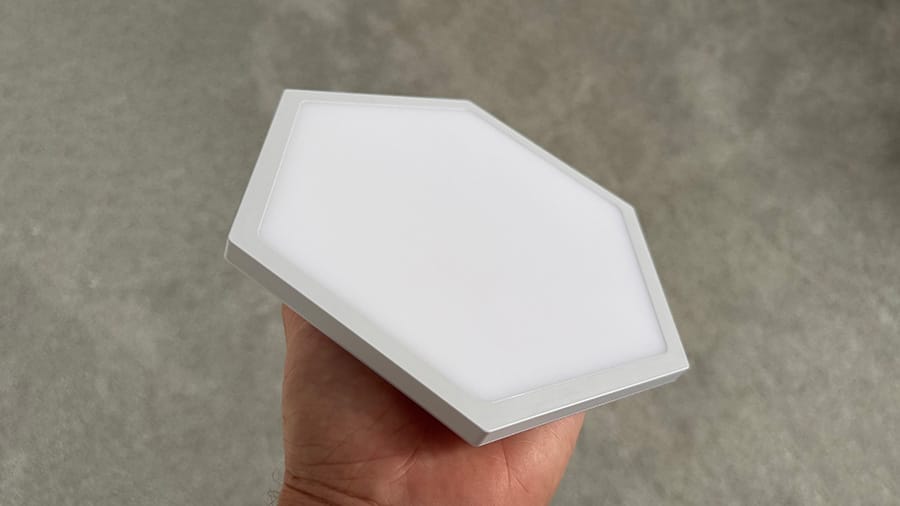
Build quality is impressive. The panels feel solid with no hollowness, flex, or creaking—each one almost feels like a single laminated unit. I’d actually say they’re better than the Nanoleaf Shapes in this way. The same can’t be said for the controller, though. For me, it feels oversized and cheap compared to the panels themselves. It’s large and nowhere near as subtle as Nanoleaf’s equivalent, but I do like that Linkind has at least embraced its size and included a little RGB flair on the controller to help it feel like part of the setup rather than an afterthought.
The linkers, on the other hand, are much harder to defend—they’re the weakest part of the Linkind EP6 Smart Hexagon setup, both figuratively and literally. You’re given six rigid linkers, a flexible one for going around internal corners (which is admittedly a nice touch), and a shorter connector for the controller. The problem is how long and fragile the rigid ones are. Not only are they fiddly to line up and click into place, they’re awkward to remove—and I actually managed to snap the end off one while setting them up for the first time and snap the side casing off another while trying to reposition a panel. Those particular linkers still seem to do their job, and all of them happily hold the EP6 Hexagons in place, but it’s not a great sign of things to come.
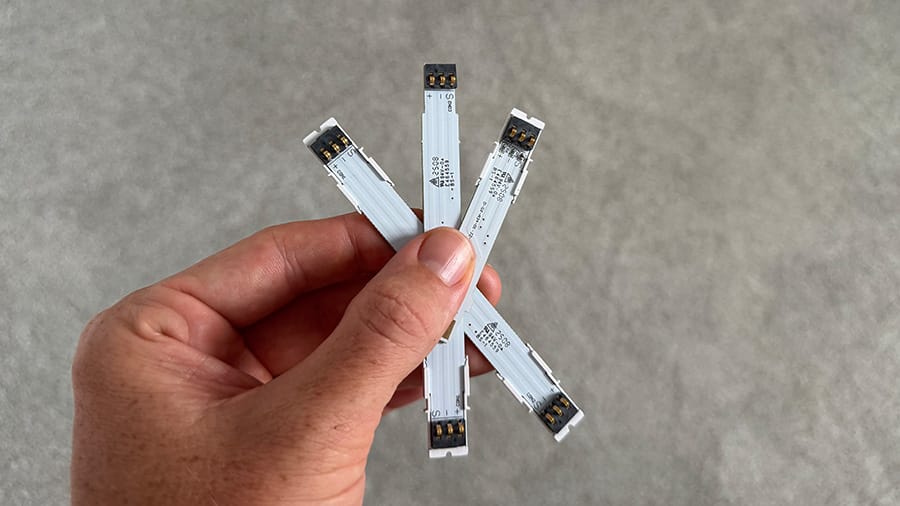
installation
There are a few clever ideas built into the Linkind EP6 installation process, and I have to commend the brand for making it largely painless. I actually nearly threw away the first of these clever ideas because it was so simple. In the box, each EP6 panel is held in place by a matching cardboard hexagon. I didn’t think anything of them at first and assumed they were just packing material—until I checked the instructions and saw these are actually templates to help you dry-install your layout on the wall before mounting the hardware for real. As a textbook over-thinker with this kind of thing, I love it. It works well and makes installing the brackets in the right place super simple. There’s even a tiny spirit level in the box and a matching cutout in each cardboard panel to help you get things perfectly aligned. It’s all wonderfully intuitive, charmingly basic in its execution, and just a damn good idea.
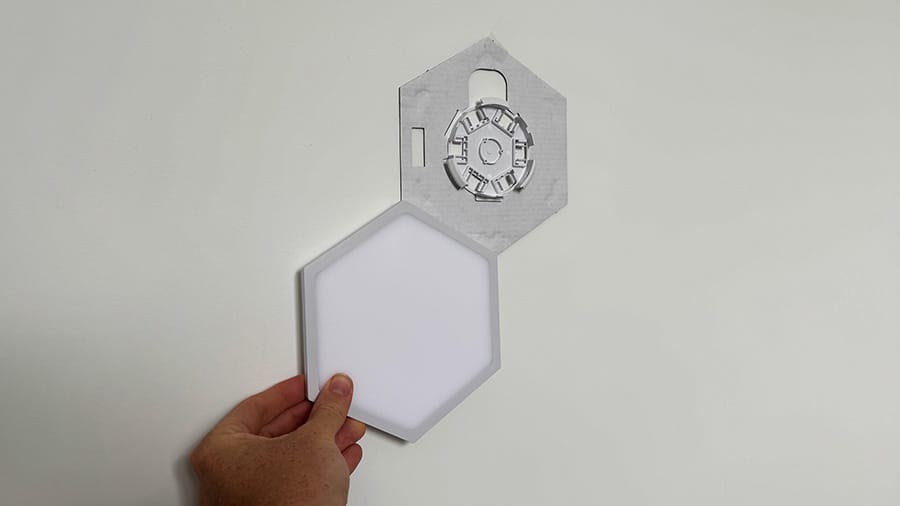
The included power cable is generous in length, though be aware—if you combine more than one set of seven panels, you’ll need a separate power cable and wall socket for each group. That’s… not great. Not only does it mean needing to hide a second cable run, but also finding an additional outlet to run it all off. Thankfully, the power cable will attach to the hub of any panel, so with a little prior planning (and maybe a well-placed pot plant), you can keep it largely out of sight.
With everything installed, pairing the Linkind EP6 panels with the AiDot app was incredibly simple. You’ll need to register an account and give them your email—which is just part of the deal with smart tech these days—but after that, it only took a couple of taps to get the panels recognised and set up. Cleverly, after you tell the app which way the controller is rotated, it figures out the rest of the panel layout by itself. There’s both Amazon Alexa and Google Assistant support here too. I tried the former, and it was surprisingly painless to set up compared to a lot of third-party smart home integrations. Again, just a couple of taps and I had reliable voice control through my Echo, no problem.
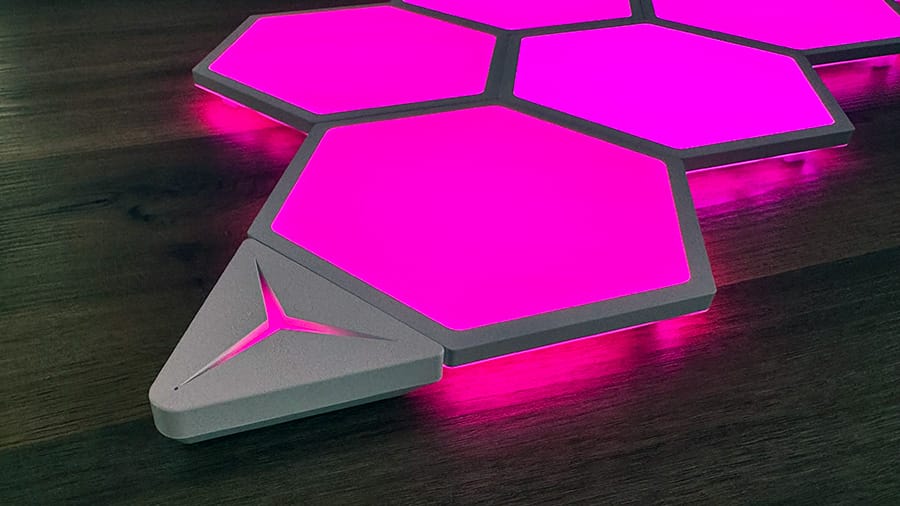
performance
There’s more to the picture, of course, but above all else, the most important measure of how well an LED panel performs is simply how much colourful light it can pump out. This is where the Linkind EP6 panels absolutely shine, if you’ll pardon the shameless pun. They’re staggeringly bright with rich, saturated colour across the full spectrum, and I found them noticeably brighter than Nanoleaf’s panels. The EP6s filled my room with colour from corner to corner, with a long throw that bounced off the opposite walls. While most of the light they cast is forward-facing, there’s a small amount of rear glow too, which helps lift the hexagonal shapes off the wall with a pleasant ambient effect—similar to Nanoleaf Lines.
There are a couple of drawbacks though, and they serve as a reminder that these are a more budget-friendly option. At higher brightness levels, there’s an audible and slightly concerning electrical hum. I found anything over about 75% brightness triggered it, and it got louder the brighter I went. In some colours, I also noticed a lack of uniformity from the edge-mounted LEDs, with visible hotspots where you could make out the individual sources. Content creators should also be aware that certain colours and brightness levels caused visible flicker at some frame rates—something that could be distracting in the background of a facecam on stream or video shoot.

The AiDot app is simple and responsive, and throughout testing, I found it quick to connect and generally stable—even when jumping in and out, which is something I’ve had issues with on Nanoleaf’s app. All the usual features are here: solid colour control, white temperature sliders, brightness, preset animations, user-submitted scenes, and a builder for your own animated effects. Most of the presets are decent, though many of them feel like slight variations on the same “random flashing” theme. Audio response is supported via both the controller’s built-in mic and your phone, though I found the sensitivity and responsiveness a little underwhelming.
The app may have identified my layout of the Linkind EP6 Hexagons, however there doesn’t seem to be much of a connection or flow between panels like I’ve seen elsewhere, despite each light having a couple of different colour zones on each. It meant I mainly stuck with solid colours or some gentle breathing effects but I was happy with these and didn’t feel short changed by what was available. I also noticed some strange behaviour with a couple of panels consistently operating out of sync with the rest of them, as if they weren’t in the right order. It was harmless but caused wipe-style animations to look a little funky.
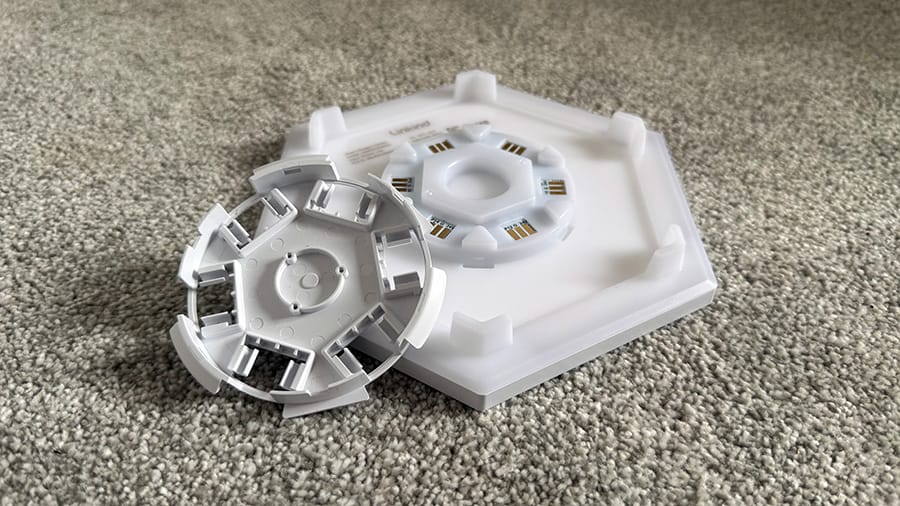
Most people will likely turn the EP6 panels on and off using the app or voice control, but there’s automation support here too. These routines can link with other AiDot-compatible gear, or just run simple timed/logic actions. There are some handy suggestions in the app, including one that gradually turns on the panels as a sunrise-style alarm. It’s nothing groundbreaking—you’ll find the same in Nanoleaf’s app—but it’s a nice touch and good to have included.
summed up
At $139.99 (and even more so if you catch them on sale), the Linkind EP6 Hexagon Panels are an impressive alternative to some of the bigger names in the smart lighting game. They’re bright and colourful with a setup process that’s refreshingly beginner-friendly, that ticks some pretty major boxes. The cardboard mounting templates are a stroke of simple genius, and the panels themselves feel more premium than you might expect for the price. If all you want is a vibrant, room-filling light without much faff, there’s a lot to like here.
That said, the Linkind EP6 Hexagons don’t quite nail every part of the experience. The hum at high brightness, occasional flicker on camera, and flaky animation sync are all worth noting—especially if you’re a content creator. The cheaper-feeling controller and fragile linkers also hold things back a bit. These won’t dethrone Nanoleaf as the top dog, but for anyone looking to brighten up their space without draining their wallet, they’re a strong contender.





